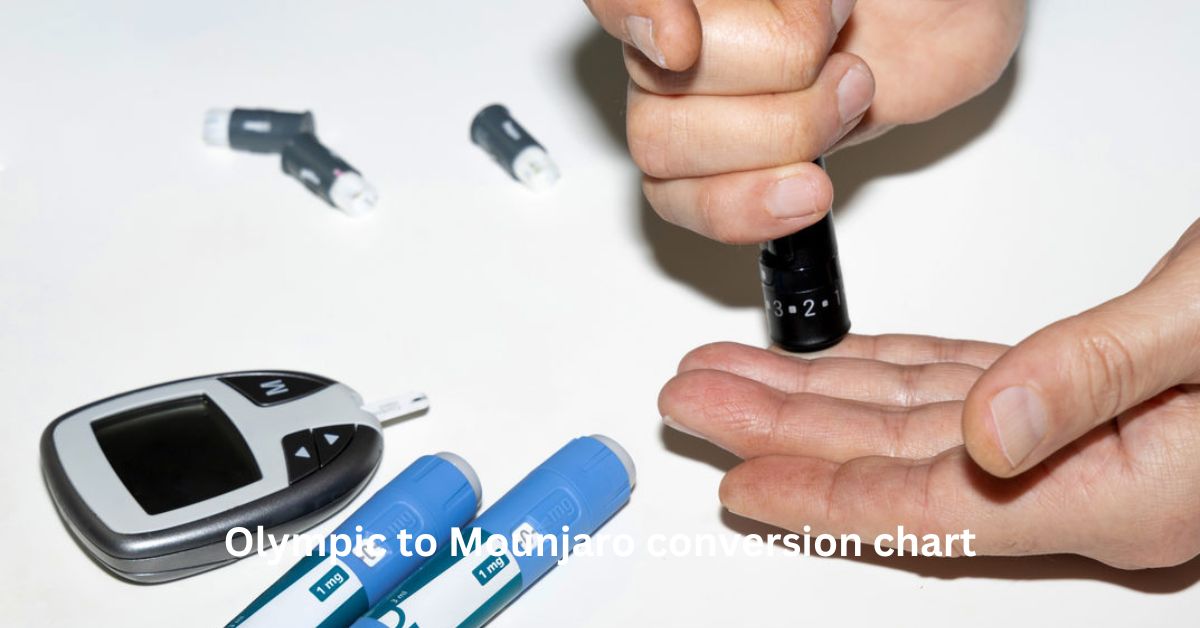A conversion chart for transitioning from Ozempic to Mounjaro ensures equivalent therapeutic effects by matching dosages and promoting safe and effective diabetes management under healthcare supervision.
This guide explores the essentials of an Ozempic to Mounjaro conversion chart, ensuring optimal outcomes for those managing type 2 diabetes.
What Are Ozempic and Mounjaro? – The Overview!
To understand the conversion process, it’s vital to grasp each medication’s unique attributes and how they impact blood sugar levels and weight.
Ozempic Overview:
Ozempic (semaglutide) is a GLP-1 receptor agonist designed to assist in type 2 diabetes management. Here’s how it works:
- Mechanism of Action: It mimics the hormone GLP-1, enhancing insulin secretion when blood sugar is high.
- Additional Benefits:
- It slows digestion, reduces appetite, and promotes weight loss.
- It helps prevent cardiovascular complications in diabetes patients.
- Dosage and Administration:
- Typically starts at 0.25 mg weekly, gradually increasing to 1 mg or more depending on individual needs.
Mounjaro Overview:
Mounjaro (tirzepatide) is a newer medication combining dual-action properties for enhanced glucose control:
- Mechanism of Action: It targets GIP and GLP-1 receptors, offering more comprehensive blood sugar regulation.
- Additional Benefits:
- Provides significant weight loss benefits, often exceeding those of Ozempic.
- It may offer improved outcomes for insulin sensitivity and metabolic health.
- Dosage and Administration:
- It starts at 2.5 mg weekly, gradually titrated to 15 mg based on response and tolerance.
Why Consider Switching from Ozempic to Mounjaro?
Switching from Ozempic to Mounjaro may be recommended for several reasons:
Enhanced Efficacy:
Clinical studies suggest that Mounjaro provides superior glycemic control and weight loss compared to Ozempic for many patients.
Side Effect Management:
Some individuals may experience fewer side effects, such as nausea or gastrointestinal discomfort when switching to Mounjaro.
Individualized Treatment Plans:
Healthcare providers may recommend Mounjaro based on factors like patient response to Ozempic, personal goals, or specific health conditions.
Insurance and Cost Considerations:
The affordability and coverage of medications can vary. For some patients, Mounjaro may be a more accessible or cost-effective option.
What Is a Conversion Chart? – Know The Concept!
A conversion chart acts as a guide to ensure therapeutic equivalency when transitioning between two medications with different dosages, mechanisms, and potencies.
Critical Elements of a Conversion Chart:
- Dosage Matching: Ensures the new medication delivers similar therapeutic effects.
- Pharmacokinetics: Considers differences in how the drugs are absorbed, distributed, metabolized, and excreted.
- Patient-Centered Adjustments: Accounts for age, weight, comorbidities, and treatment history.
Conversion charts are not universal; they must be tailored to individual needs and interpreted by healthcare professionals to ensure safety and efficacy.
Step-by-Step Guide to Transitioning – The Procedure!
Switching from Ozempic to Mounjaro involves several steps. Below is a detailed roadmap for patients and healthcare providers:
Initial Consultation:
Discuss your medical history, treatment goals, and reasons for switching with your healthcare provider.
Baseline Assessment:
Before transitioning, evaluate:
- Current HbA1c levels.
- Weight and BMI.
- Any side effects or challenges experienced with Ozempic.
Starting Dosages:
Familiarize yourself with the typical starting doses:
- Ozempic: Starts at 0.25 mg and titrates up to 1 mg or more.
- Mounjaro: Begins at 2.5 mg and gradually increases to 15 mg based on patient response.
Using the Conversion Chart:
A hypothetical equivalency chart might look like this:
| Ozempic Dose | Mounjaro Dose |
| 0.5 mg | 5 mg |
| 1 mg | 10 mg |
The exact dose will depend on your response and tolerability.
Transition Period:
- Gradual transitions are safer to minimize side effects.
- Monitor blood sugar levels frequently during the adjustment period.
Ongoing Monitoring:
Regular follow-ups with your healthcare provider are critical. Based on your body’s response to Mounjaro, adjustments may be needed.
Challenges in Transitioning – What Comes In The Way!
While a conversion chart simplifies the switch, there are challenges to consider:
- Side Effects:
Both medications can cause nausea, vomiting, or diarrhea, particularly during dose adjustments. - Individual Variability:
Not all patients respond to medications the same way. Some may need more time to stabilize on Mounjaro. - Insurance Approval:
Check with your provider to ensure Mounjaro is covered under your plan. - Adherence:
Patients must follow dosing schedules precisely to achieve optimal results.
Insights Beyond the Basics – Think More!
Transitioning from Ozempic to Mounjaro isn’t just about dosage; it’s about finding a solution that aligns with your health goals. Here are some practical tips:
Focus on Lifestyle Changes:
While medications play a pivotal role, combining them with a healthy diet, regular exercise, and stress management can amplify benefits.
Track Your Progress:
Use apps or journals to record your blood sugar levels, weight, and side effects. Sharing this data with your healthcare provider can help fine-tune your treatment.
Stay Informed:
As new studies and guidelines emerge, staying informed empowers you to make the best decisions for your health.
Frequently Asked Questions:
Why is a conversion chart important when switching from Ozempic to Mounjaro?
A conversion chart ensures safe and effective dose adjustments, aligning therapeutic effects between the two medications.
Can I stop Ozempic abruptly before starting Mounjaro?
Abruptly stopping Ozempic isn’t recommended. Always consult your provider for a tailored transition plan.
Are the side effects of Mounjaro similar to those of Ozempic?
Yes, both may cause gastrointestinal symptoms, but individual tolerance varies.
How do I know if Mounjaro is working for me?
Regular HbA1c tests, weight tracking, and symptom monitoring are indicators of efficacy.
Can I adjust my Mounjaro dose without consulting a doctor?
No. A healthcare professional should always guide dosage changes.
Conclusion
Transitioning from Ozempic to Mounjaro is a nuanced process that requires careful planning and ongoing collaboration between patients and healthcare providers. By leveraging an Ozempic to Mounjaro conversion chart, individuals can ensure a safe and effective switch, improving glucose control and weight management.
If you’re considering this transition, consult your healthcare provider, stay informed, and follow a structured plan for the best outcomes. Diabetes management is not a one-size-fits-all approach—it’s about finding what works best for you.






